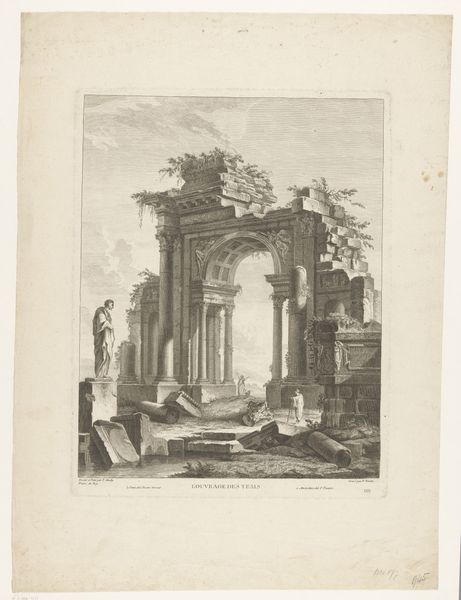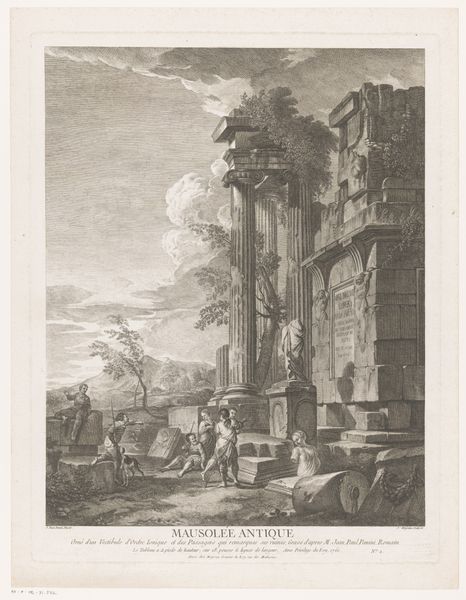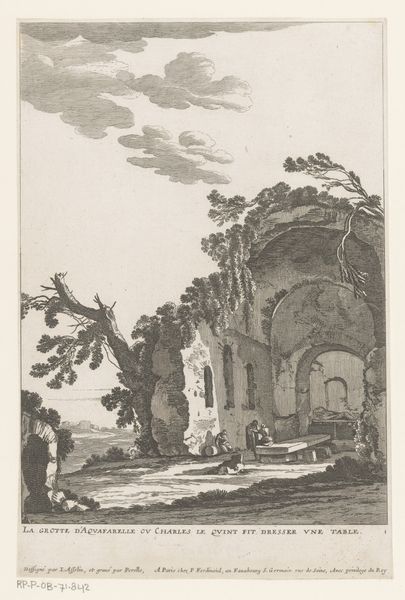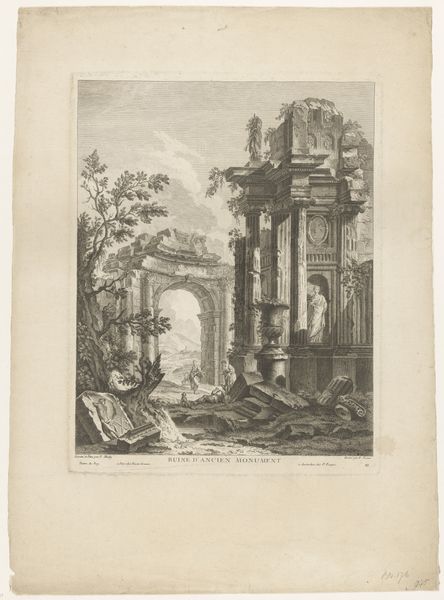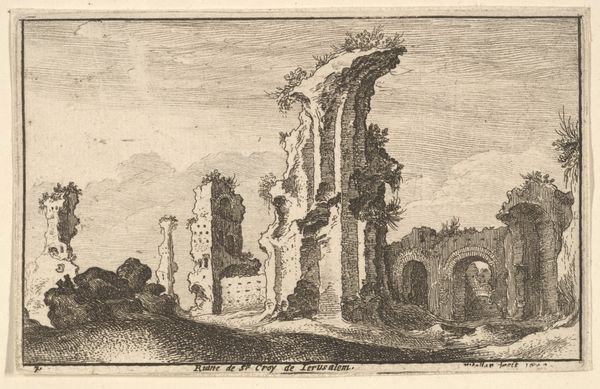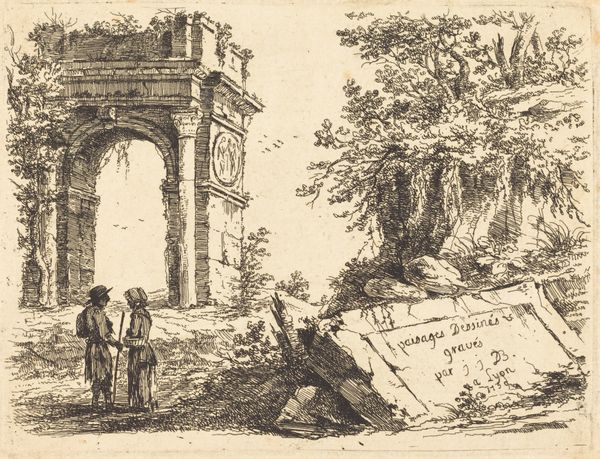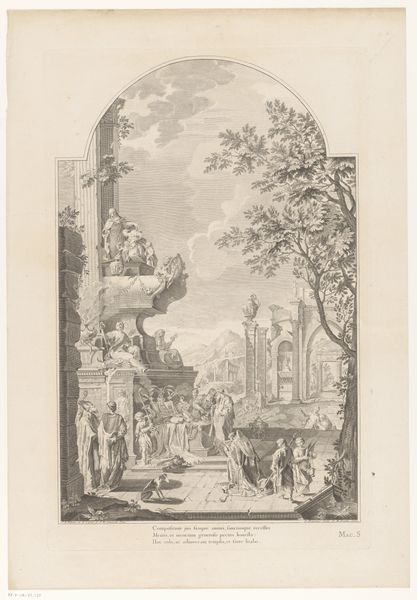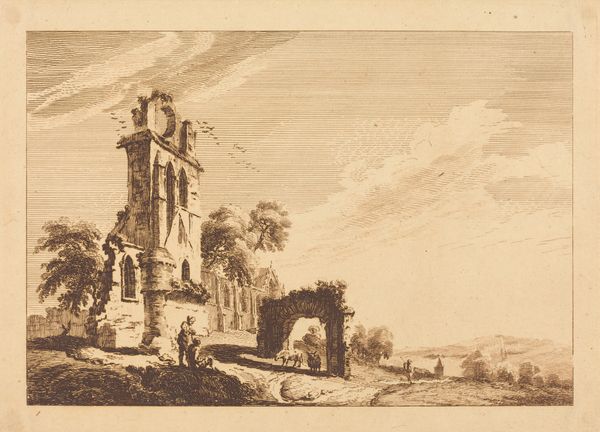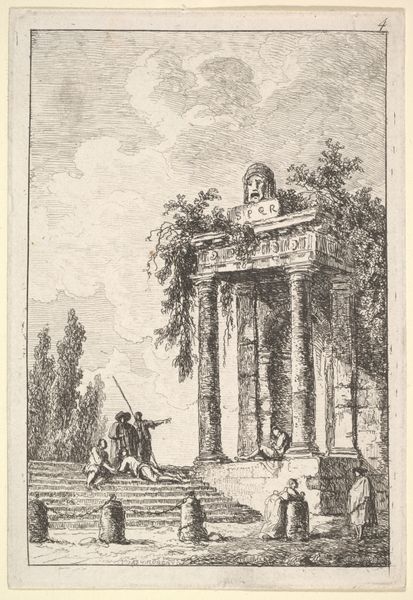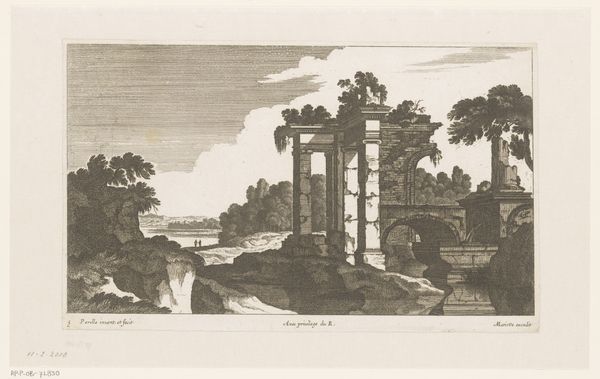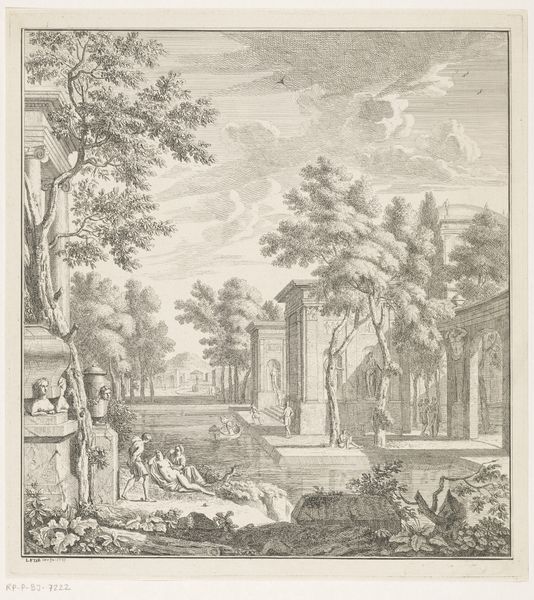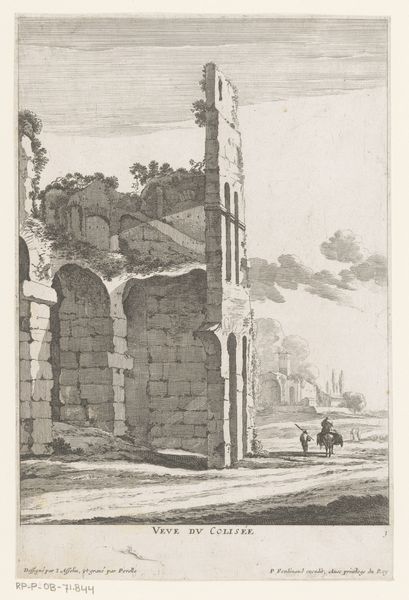
engraving
#
baroque
#
landscape
#
classical-realism
#
cityscape
#
engraving
Dimensions: height 115 mm, width 99 mm
Copyright: Rijks Museum: Open Domain
Curator: This is "Two Men Beside the Ruins of a Gate in Rome" an engraving by Johann Franz Ermels, likely created between 1651 and 1693. Editor: There's a certain wistfulness to it. The decay is palpable, but also... picturesque. Like a memento mori viewed through a romantic lens. Curator: Precisely! Ermels has used precise lines to define the textures—stone, foliage, even the clothing of the men. Note how the composition guides our eyes from the foreground figures through the arch and into the distant architecture. Editor: Those figures, though. They seem dwarfed, don't they? And not just by the sheer scale of the ruins, but also by the weight of history, almost disappearing within this image of temporal decay. What does this signify? Curator: The inclusion of figures grounds the fantastical with reality. They allow the viewer a sense of human presence in this ruined landscape, suggesting a meditation on time and its impact on human structures. Editor: What intrigues me is the symbolism within the architecture itself. The arch, now crumbling, speaks of triumphs, once glorious, now turned to dust. Does it invoke the idea of the cyclical nature of civilizations? Or a subtle commentary on imperial hubris? Curator: One could certainly read it that way. However, one may also consider the work an objective study in form and technique. Note the detail given to rendering depth through linear perspective, creating a strong illusionistic space. Editor: The play of light and shadow enhances the mood, imbuing it with drama and depth. Even though it’s an engraving, there is still tonal variety. Curator: That interplay certainly directs our eye. It highlights areas of visual interest, guiding us through the artist’s structured interpretation. It is ultimately the framework that provides symbolic substance to the artist’s architectural subject matter. Editor: For me, the enduring resonance comes from its suggestion that the past, even in its ruined state, shapes our present—if only as a somber reminder of our shared mortality. Curator: Indeed, regardless of interpretative stance, Ermels' work presents both aesthetic beauty and complex ideas that offer enduring insights.
Comments
No comments
Be the first to comment and join the conversation on the ultimate creative platform.
